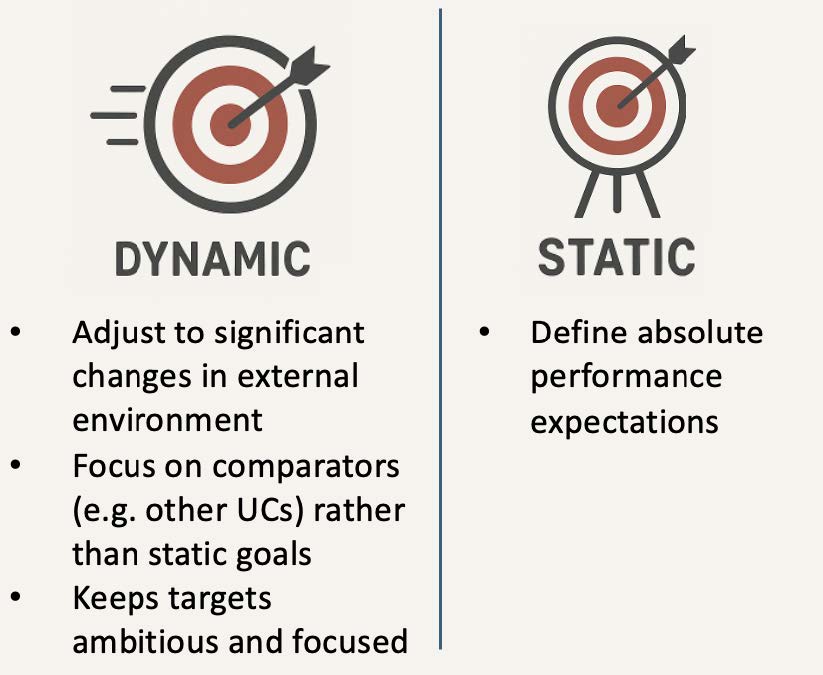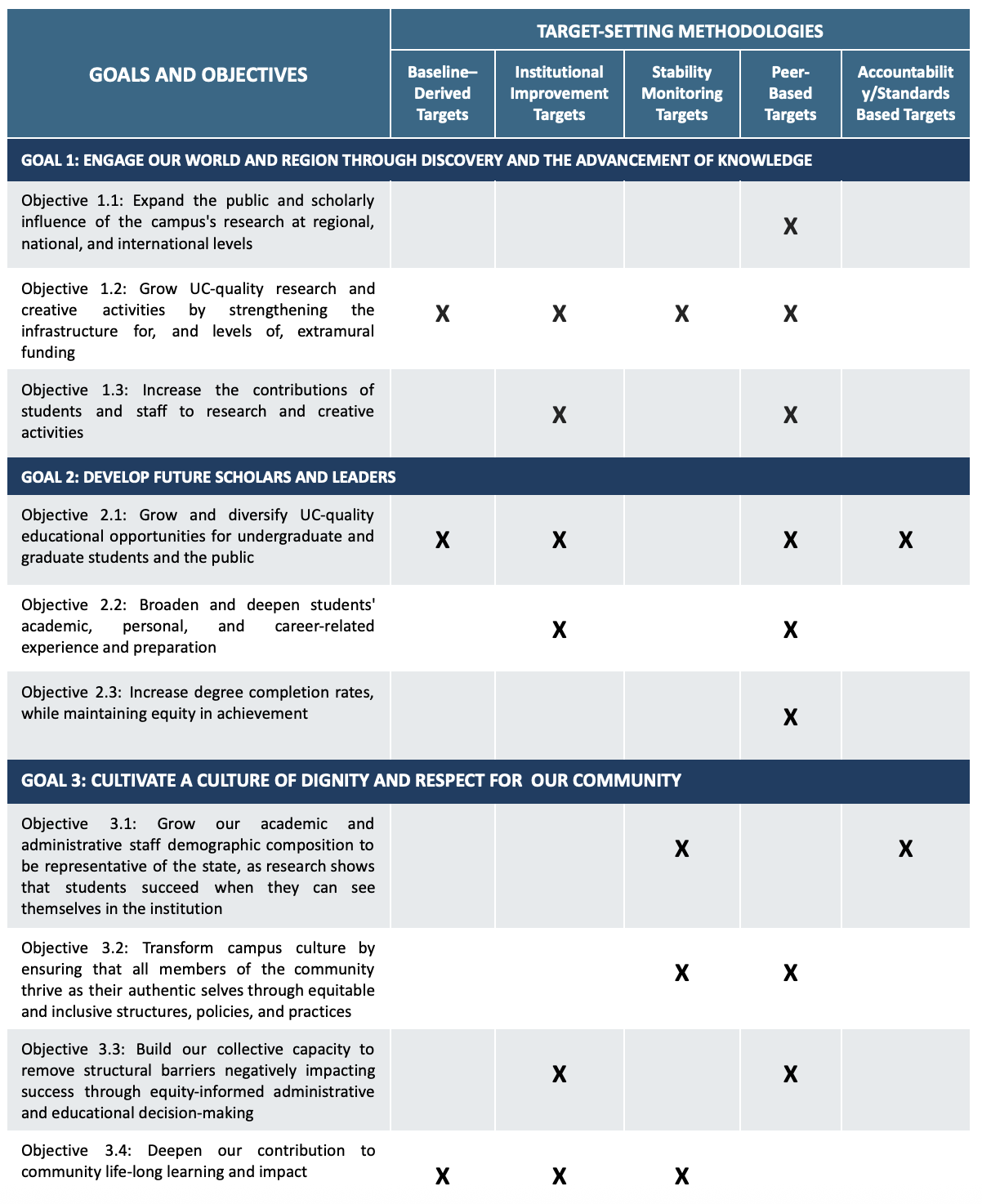Determining Measurement Updates and Revised Targets
To ensure our measures and targets remain meaningful in a rapidly changing higher education environment, the recalibration introduces the use of dynamic targets and different target-setting methodologies to track progress. These refinements enable UC Merced to adapt to shifts while maintaining clear accountability and alignment with institutional priorities. Progress on all measures is tracked through the Strategic Plan Scorecard, which provides an accessible overview of key indicators, targets, and performance trends. Together, these data-informed updates ensure the strategic plan functions as a living document—regularly reviewed through shared governance and updated annually to reflect both achievements and emerging opportunities.
Sections below:
Transition to the Use of Dynamic and Static Targets
Addressing volatility in external environments has been among the most significant challenges in higher education in 2025, with federal and regulatory changes affecting the sector. Among external uncertainties and proposed policy changes affecting our campus are the following: (1) Significant grant terminations for work in specific research areas (e.g. climate change, health and educational disparities, renewable energy) and initiatives to reduce funding available through key federal funding agencies such as NIH and NSF may critically impact UC Merced’s research expenditures and research trajectory; (2) Demographic changes and concerns about the return on higher education investments may lead to altered college enrollment patterns. These changes necessitate more nimble strategic planning, more frequent, focused plan updates, and the utilization of dynamic targets. In this iteration of the plan, we supplement static targets with dynamic targets, and suggest recommended, annual updates through shared governance processes.
 Determining Measure and Target Types
Determining Measure and Target Types
The strategic plan update team used measures included in the original plan and supplemented or replaced them where (1) goals were accomplished (e.g. R1), (2) a measurement approach was not defined or the originally defined measures did not align fully with the stated objectives; (3) a data source for the proposed measure could not be obtained.
The update team discussed different approaches to defining specific targets for measures.
Overall, the group recommended five target-setting methodologies to highlight that setting meaningful and actionable targets requires drawing from multiple approaches—some internally driven, others benchmarked externally, and still others tied to stability and compliance standards. Each methodology is designed to ensure that targets are not only aspirational but also realistic, measurable, and aligned with both UC Merced’s mission and external expectations.
The baseline-derived, institutional improvement, and stability monitoring approaches focus primarily on UC Merced’s own data and historical performance. These methods allow us to define progress relative to projections, growth rates, and thresholds of stability, ensuring continuity and accountability over time. On the other hand, peer-based, and accountability/standards-based targets emphasize external comparisons and expectations. By referencing UC peers, AAU benchmarks, national medians, or state and accreditation requirements, these targets connect UC Merced’s trajectory to broader higher education landscapes and policy frameworks.
Together, these five methodologies provide a flexible toolkit for setting strategic plan measures. They balance internal performance improvement, external accountability, and peer competitiveness while also safeguarding against volatility through monitoring thresholds. This layered approach will allow UC Merced to calibrate success dynamically—anchoring growth in evidence, meeting regulatory and policy demands, and positioning the institution among leading peers. These approaches thus ground the updating of measures and targets, as identified in the scorecards (see p. 7 for the overall scorecard, and the appendix 1 for a more nuanced scorecard that contains leading indicators and process metrics).

